| MAURYAN DYNASTY (from 321 to 185 B.C.E.) | |||||||||||||||||||||||||||||
KINGS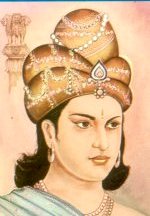 | CHANDRAGUPTA MAURYA ( ascended the throne 322BC) :Identified with Sandrocottus; overthrew last of the Nandas- Dhanananda ; his capital: Pataliputra ; conquered: Guj , Kathiawar, some parts of Deccan ; 300B.C.-abdicted his throne , starved himself in 298BC at Sravanabelagola( Mysore ) ; succeeded by his son BINDUSARA : maintained friendly ties with Hellenic west; He requested Antiochus I (Seleucid King of Syria) to send the figs, wine nd sophist. Antiochus I sent figs, wine but not sophist nd replied greek sophist were not export Deimachos- greek envoy at his court ASOKA : succeeded in about 269 BC ; B4 he came to d throne, he was viceroy of Taxila & Ujjain ; known as Devanampiya & Piyadassi fought only one war – Kalinga (261 BC) he embarked on conquest by righteousness (Dhamma Vijaya ) won many victories by righteousness- 5 Hellenic Kings - Antiochus II Theos of Syria, Ptolemy II Philadephus of Egypt, Antigonus Gonatas of Macedonia , Magas of Cyrene , Alexander of Epirus strongly supported d doctrine of ahimsa , not a complete pacifist despite d remorse at conquest of kalinga , he dint restore it to its original rulers; he inaugurated new class of officers “ Officers of Righteousness” his personal region was Buddhism; was not metaphysician , never mentions nirvana but heaven The Last Mauryas Brihadratha – was assassinated by his senapat Pushymitra ( Shunga dynasty) | ||||||||||||||||||||||||||||
| ADMINISTRATION | Centralized Administration : the kings was highest authority , had unlimited power ; Acc. to Kautilya : “ sovereignty is possible only with assistance” imp functionaries called Tirthas – 27 adhyakshas( superintendents) Provincial Administration empire was divided into no. of provinces, der was governor for each provinces Kumar-mahamatras- prince of royal blood as viceroy Mahamatras- rest of the mahamatras Asoka had four provinces Provinces
Kalinga with its capital Tosali Mahamatras were assisted by yukta( tax collector),rajuka ( revenue officer) sthaniks( district officer) Village- smallest unit nd officer known as Gramika Land revenues from rural areas –
Espionage: worked under Mahamatyapasurpa 2 types of spies- santha & sanchara Male spies known as santi, tishna, sarad while female spies were called vrishali, bhikshuki, parivarjaki | ||||||||||||||||||||||||||||
| SOCIETY | caste system had become very rigid in Asoka’s reign – caste system had become somewhat loose women position – they were respected but they had to face discrimination; Purdah system was not known but practiced polygamy – was prevalent in royal family slaves were employed in agriculture | ||||||||||||||||||||||||||||
| RELIGION | Hinduism , Jainism & Buddhism were popular religion , rivalry existed between dem yajnas were performed but animal sacrifices had lost much of importance , image worship still not in vogue Asoka’s Dhamma personal religion was Buddhism , it is dhamma that had made Asoka of the greatest ruler of Indian history | ||||||||||||||||||||||||||||
ECONOMICS CONDITION | economy was agrarian ; Indian silk & COTTAN WERE IN MUCH DEMAND IN WESTERN COUNTRIES existence of srenis( guilds) coins of different metals nishka- gold purana- silver karshapana- copper heavy taxation The royal highway betn Taxila & Pataliputra was the ancestor of the grand trunk road of 2day. | ||||||||||||||||||||||||||||
| ART &ARCHITECTURE | Chandragupta Maurya built his capital & palace apparently of wood. introduced stone masonry Palace @ Kumahar near Patna – 80 pillared hall Asoka’s reign the art of sculpture & rock cutting attained great heights. four rock-cut sanctuaries on the Barabar hills nd three on Nagarjuni hills near Gaya( Bihar) Pillar at Sarnath. It was in the Mauryan times that burnt bricks first used in north- eastern India. | ||||||||||||||||||||||||||||
LITERATURE  | Literature---Chandragupta & bindusara favored Sanskrit & & BRAHMANICAL learning Asokan Inscription – composed mainly in Prakrit language & in brahmi script also used Kharoshthi and Greek scripts kautilya’s Arthashastra Bhadrabahu’s Kalpasutra Buddhist scripture – Katha Vathu | ||||||||||||||||||||||||||||
| The Shungas : | |||||||||||||||||||||||||||||
KING  | Pushyamitra: founder , referred as senapati, Agnimitra: son of Pushyamitra & viceroy of Vidisa ; was instrumental in suppressing the revolt of Vidarbha under Yajnasena Vasumitra: grandson of Pushyamitra, repulsed a major attack of Demetrius | ||||||||||||||||||||||||||||
| ADMINISTRATION | not a closely-knit centralized rule; was more of federal one | ||||||||||||||||||||||||||||
| RELIGION | brahmanical influence revived , the practice of Vedic sacrifice was popularized , Pushyamitra is said to have performed two ashvamedha yajnas ; | ||||||||||||||||||||||||||||
ART & ARCHITECTURE Bharhut Stupa Bharhut Stupa | Bharhut stupa being built , besides the fine railings of the Sanchi stupa (despite Buddhist persecution) | ||||||||||||||||||||||||||||
LITERATURE   | Mahabhashya- Patanjali ( was born at Gonanda in this period) Malavikagnimitra- Kalidasa ( based on life of Agnimitra) | ||||||||||||||||||||||||||||
| THE KANVAS: founder of dynasty- Vasudeva Kanva comprised four kings & ruled for 45 years. Its decline was due to the expansion of Satavahana power in the Deccan and the foreign invasions in the north. | |||||||||||||||||||||||||||||
| THE CHETIS OF KALINGA : SOURCE OF INFORMATION: Hathigumpha inscription ( near Bhubaneswar, Orissa) Kharavela 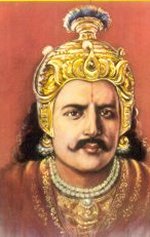 - 3rd king of dynasty ,said to have defied the Satavahana ruler Satakarni , follower of Jainism nd he constructed the caves in Udaigiri | |||||||||||||||||||||||||||||
| THE SATAVAHANAS : referred to as the ANDHRAS in the puranas; came into prominence in the Deccan after ending the rule of shungas nd kanvas .SIMUKA : founder of dynasty | |||||||||||||||||||||||||||||
| King | SIMUKA : founder of dynasty | ||||||||||||||||||||||||||||
 | HALA: famous king SRI SATAKARNI :ruled for 18 yrs, identified with the Satakarni the Nanaghat inscription ( called as Lord of Deccan &^ husband of Naganika) ; performed two horse sacrifice ; capital was at Pratisthan( Paithan- Maharashtra) GUATIMIPUTRA SATAKARNI: saved Deccan from Shaka onslaught s; managed to salvage whatever damage was done by Nahapana( Shaka King) , also overthrew Parthian & Greeks ; control over Malwa, Kathiawar, Gujarat , Berar VASHISHTHIPUTRA PULAMAYI : son of GUATIMIPUTRA SATAKARNI, first satavahana ruler to establish his authority in Andhra country VASHISHTHIPUTRA SATAKARNI: married to the daughter of Rudradaman i but this didn’t prevent him from twice defeating satavahanas YAJNASRI SATAKARNI: recovered north-Konkan and Malwa from the Shakas, lover of navigation & trade, his coins have been found in ANDHRA, Maharashtra. Gujarat & Madhya Pradesh , ship on his coins | ||||||||||||||||||||||||||||
| ADMINISTRATION | monarchy was hereditary, content simple title of Rajan , empire was divided into janapadas & aharas; Gama – division below ahara ; taxes – neither burdensome nor many sources of income- royal domain, salt monopoly, taxes on land & income from court fees Satavahanas acted as link between north nd south India ( in trade & exchange of ideas ) | ||||||||||||||||||||||||||||
| SOCIETY | Gautamiputra Satakarni – re-established the four –fold Varna system Absorption Of Shakas in Hindu society as Kshatriyas In social hierarchy, there were at least four classes – mahabhojas. Maharathis and mahasenapatis : cream of society amatyas, mahamatras, bhandagarikas & non-officials – 2nd class vaidya, lakhaka, suvarnakara- 3rd class malakara, vardhaki, dasaka- 4th class customary to their king to be named after his mother , the women enjoyed a good deal of importance, family was patriarchal coz succession to the throne passed to the male member | ||||||||||||||||||||||||||||
| RELIGION | worshipped a large number of Vaishnava gods such as Krishna, Vasudeva & others , Vedic sacrifice were performed & Brahmans were paid , king also promoted Buddhism , Mahayana Buddhism commanded considerable following , Buddhism flourished in Nasik & Junnar areas in the western Deccan | ||||||||||||||||||||||||||||
| ECONOMICS CONDITION | In Karimnagar district a blacksmith’s shop has been discovered ; gold may have been used as bullion . dint issue gold coins but coins of lead ,potin, copper and bronze money kingdom was famous for production of rice and cotton | ||||||||||||||||||||||||||||
ART & ARCHITECTURE  Amravati Stupa Amravati Stupa  Nagarjunakonda Nagarjunakonda | many Buddhist chaityas nd vihars were cut out of the solid rock in the north –western Deccan , most famous chaitya – Karle( 1st cen. BC) rock –cut architecture found in Andhra Amravati stupa – began in about 200 BC but completed in 2nd century AD Nagarjunakonda- prospered most in the 2nd-3rd centuries under the patronage of the Ikshvakus | ||||||||||||||||||||||||||||
| LITERATURE | official language – Prakrit all inscription were written in Prakrit & in brahmi script prakrit text called Gathasapati is attributed to a Satavahana king Hala | ||||||||||||||||||||||||||||
Other rlted person/place  | Pliny | ||||||||||||||||||||||||||||
| Gupta Dynasty | |||||||||||||||||||||||||||||
| KINGS | Sri Gupta & Ghatatkacha – first two rulers of dynasty Chandra Gupta: son of Ghatatkacha , assumed the title of Maharajadhiraja strengthened his position by matrimonial alliance with Lichchavis(kshratiyas) , the lichchavis princess Kumaradevi must have brought to the Guptas the gupta era started in AD 320 Samudra GUPta: has been called Indian Napolean by V.A.Smith prayag prasaTI- EULOGIC INSCRIPTION composed by his minister and court poet Harisena , on old Asokan pillar( @ Allahabad ) ; HArisena described him as the hero of hundred battle , some coins of samdrugupta represent him as playing on the vina, performed Ashvamedha sacrifice , follower of brahmanical learning..he granted permission to the Buddhist king of Ceylon-Meghaverman to build monastery @ Bodh Gaya ;assumed the title of Vikramankaand Kaviraja Chandra Gupta II: in the play Devichandrapuptam of Visakhadatta…Rama Gupta is elder brother of Chandra Gupta II however Gupta records do not refer to Rama Gupta...married with the Nga princess Kubernaga and allowed his daughter Prabhavati to marry with Rudrasena II,a Vakataka King …invaded the shaka Kingdom of Gujrat &Khatiawar , killed the Shaka chief Rudrasimha III …Ujjain - @nd capital of Guptas …adopted the title of Vikaramaditya …adorned by many scholars ….Kalidasa Amarsimha…Chinese Pilgrim - FA-Hsien(399-414) visited india …Mehrauli iron pillar inscription near Qutab Minar ,Delhi ,enumerates the exploits of Chandra gupta II Kumaragupta Chandragupta II was succeeded by his son Kumaragupta I. Known as the Mahendraditya, he ruled until 455. Towards the end of his reign a tribe in the Narmada valley, the Pushyamitras, rose in power to threaten the empire. Skandagupta: is generally considered the last of the great rulers. He defeated the Pushyamitra threat, but then was faced with invading Hephthalites or "White Huns", known in India as the Huna, from the northwest. He repulsed a Huna attack c. 455, But the expense of the wars drained the empire's resources and contributed to its decline. Skandagupta died in 467 and was succeeded by his son Narasimhagupta Baladitya | ||||||||||||||||||||||||||||
| Administration | golden age of ancient India .. the country was divided into into several Bhuktis(provinces) …further divided into Visyas(districts) adopted titles like Parambhattaraka, Paramdaivata, Chakravati,Parmeshwar etc. Kumaraamtyas- most imp officials | ||||||||||||||||||||||||||||
Economy 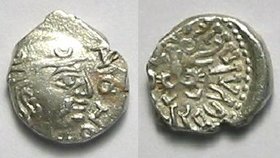 | issued the largest no. of gold coins …called dinars. Items of import included Chinese silk in greater quantity & ivory from Ethiopia …Horses too imported from Arabia, Bactria & Iran...cities like Banaras, Thaneshwar & Mathura came into prominence | ||||||||||||||||||||||||||||
| society and Religion | Acc to Naradasmriti( 5th cen) – Brahmanas became richer because oif land grants position of Shudras- improved slightly , permitted to listen to the epics & Puranas , to worship new god called Krishna , now considered as agriculturists rather than slaves but untouchables increased in numbers (chandalas) women position declined ..disallowed formal education & inheritance of property , widow marriage was disallowed …the fisrt reference to sati appears in Gupta Times in AD 510 at Eran… Buddhism- no longer received Royal patronage …Bhagavatism or Vaishnavism overshadowed Mahayana Buddhism Vishnu became a member of trinity of Goods shakti cult gave rise to consorts to gods, and goddess like Lakshmi , Paravati , Durga ..by the fourth century AD Bhagavad-Gita was finally complied | ||||||||||||||||||||||||||||
Art & Crafts  | brick temples – Bhitargaon(Kanpur), Bhatari(Ghazipur), Deogarh(Jhansi) Nalanda( Buddhist University ) – was set up in 5th century two important styles – Nagara & Dravida stupas : Mirpur Khas(sind), Dhamekh at Sarnath rock-cut architecture- chaitya nd viharas..mostly found in Ajanta, Ellora & Bagh sculpture - 2 metre high bronze image of the Buddha(Sultanganj, near Bhagalpur) hindu sculpture- Deogarh temple( mythological themes of Rama, Vishnu And Narayana) Art of Painting- high degree of proficiency…narrative scenes mostaly portray Jataka stories Ajanta : portray panorama the whole human and natural drama | ||||||||||||||||||||||||||||
literature  | Sanskrit- official language of gupta empire …Ramayana and Mahabharata were complied in this period. | ||||||||||||||||||||||||||||
science and technology 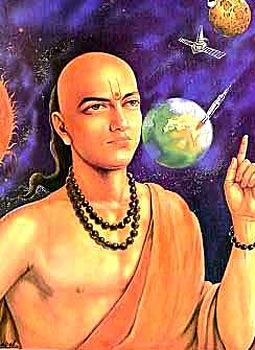 | Indian notational system –called Arbic by the English , called Hindsa by the Arabs themselves Aryabhatta- calculated vale 22/7& length of solar year , theorized upon the Earth’s rotation on its axis Varahamitra- astronomer: moon rotated the earth which rotates around the sun Vagabhatta – renowned physician | ||||||||||||||||||||||||||||
| SMALL KINGDOMS IN NORTH | |||||||||||||||||||||||||||||
| Maitrakas of Valabhi | family belonged to the Maitraka clan in Saurashtra founder:Bhatarka; Capital: Valabhi Dhruvasena II married to the Daughter of Harsh of Kanauj during the time of Dhruvasena IV that the celebrated Sanskrit Epic Bhattikavyam or Ravanavadham was composed by Bhatti overthrown by the Arabs of Sind | ||||||||||||||||||||||||||||
| Maukharis of Gayas | source of information: Barabar & Nagarjuni inscription first ruler of branch – Yajnavarnma | ||||||||||||||||||||||||||||
| Maukharis of Kanauj | probably were Kshatriyas, isanavarman- claimed victory over Andhras, Sulikas of Orissa & the Gaudas long dual between Maukharies & the later Guptas | ||||||||||||||||||||||||||||
| The Later Guptas | Kumara Gupta: 1st independent ruler of Dynasty Adityasena- took title of Parama-Bhagavata, got a temple of Vishnu constructed Aspad inscription from Gaya- gives name of eight late-gupta kings | ||||||||||||||||||||||||||||
| Gaudas of Bengal | greaset ruler of dynasty- Sasanka…fought against the rulers of Thaneshwar nd Kanuaj …entered into alliance of Maukhari ruler | ||||||||||||||||||||||||||||
| small kingdoms of Deccan | |||||||||||||||||||||||||||||
the Vakatakas  | belonged to Bundelkhand ; founder: Vindyasakti Pravarasena ( son of Vindyasakti) ruled over territories extending from Bundelkhand to Andhara Pradesh Prithvisena: contemporary of the Great Gupta Emperor Samudragupta Rudrasena II: married to Prabhavati (daughter of Chandragupta II) Harisena – belonged to minor branch of Vakataka Vakataka power was destroyed by the kalachuries & THE Kadambas Ajanta cave fresco paintaings were excavated during their rule. | ||||||||||||||||||||||||||||
| Ikshvakus | after fall of Satavahanas ,there arose the kingdom , they built monument at Nagarjunakonda & Dharanikonda. rule ended with their conquest by the Pallavas | ||||||||||||||||||||||||||||
| Chalukyas- | |||||||||||||||||||||||||||||
Chalukyas of Vatapi(Badami) | Jayasingha & Ranaraja- !st two ruler Pulakesin I(535-566) ; founded the fort of Vatapi ( Bijapur, Karnataka) Pulakesin II(611-642): known as Satyasraya, contemporary of Harshvardhana…victory over Harsha in 620. established his influence over the whole of Deccan…defeated the Pallava king, Mahendra Varman I ….made himself master of 3 kindoms – Maharashtra, Konkan and Karnata killed by Narasimhavarman( Pallava king) in 642 Vikaramaditya (655-6810):son of Pulekesin II , succeeded in recovering his paternal dominions from grip of the Pallavas. Vikaramaditya II(733-746): defeated the The Pallava kirtivarman- II (733- 757): lost Maharashtra to Dantidurga( Rashtrakuta) | ||||||||||||||||||||||||||||
| Eastern Chalukyas of Vengi | founded by Kubja-Vishnu-Vardhana (Pulakesin II’s brother )…transferred his capital from Pishtapura to the ancient city of Vengi(Andhra)….hostilities between of the Rashtrakutas and Chalukyas of Vengi were strong Vijayaaditya III(848-892) : credited with the victories over the Pallavas, the Pandyas and the Rashtrakutas they became the allies of the Cholas- Kulottunga chola annexed the empire | ||||||||||||||||||||||||||||
| Western Chalukyas of Kalyani | descent from the main line of Chalukyas of Vatapi…re-established by Taila in 973, when he defeated the last Rashtrakuta ruler Amoghvarsha IV Somesvara I(1043-1068) : involved in a protracted war with Cholas 7 was finally defeated by Chola ruler, Virarajendra in the battle of kudal Somesvara II(1068-1076): a tyrannical ruler –was overthrown by his brother Vikramaditya II Tribhuvanamalla(1076-1126): the hero of Bilhana’s Vikramaaditya Charita…he introduced Chalukya-Vikrama Era (1076 AD) Jagadekamalla II- with the death of him Challukyan power was eclipsed…nd the thorne was usurped by the Kalachuri minister – Vijjala/Vijjana…. | ||||||||||||||||||||||||||||
| Achievements of Chalukyas | much of the paintings & sculptures of Ajanta & Ellora caves were completed during this region …style of temple –vesara( admixture of the Dravida & Nagara) : famous temple- Virupaksha temple (Pattadakal, near Badami) , the Vishnu temple of Badami, the Siva temple of Maguti, the Kashi Visveswara temple of Lakhundi Sanskrit writer : Bilhana- Vikramaaditya Charita and Chaurapanchasika(poet) Vijnanesvara- Mitaksara | ||||||||||||||||||||||||||||
| Rashtrakutas | |||||||||||||||||||||||||||||
| Dantidurga: founder ….succeeded by his uncle Krishna(758-722)….succeeded by his son Govinda(773-780)…was deposed by his younger brother Dhruva Nirupama- regarded as peak of rashtrakuta…territories ultimately came to his son, Govinda III Jagattunga(793-814)…succeeded by son Sarva, known as Amoghvarsha I(814-878)…said to hav built the city of Manyakheta as his capital….last great ruler of the dynasty was Krishna III(939-967)- who occupied Kanchi and Tanjore & defeated a chola army at the battle of Takkolam(949) | |||||||||||||||||||||||||||||
| Achievements of Rashtrakutas | Krishna I –built the rock-cut Kailasa temple @Ellora(latter half of the 8 cen AD), constructed in Dravidyan style of the Chalukyas …. Amoghvarsha said to have written the earliest book of poems in Kannada | ||||||||||||||||||||||||||||
| Gangas | either belonged to the line of Ishvakus or associated with the river Ganga…kingdom included the greater part of Mysore or with Kanvas…founded by Didiga(konganivarman) & Madhava(in 4th cen AD)…early capital was Kuluvala but was trf to Talkad by Harivarma…Durvinita..had to conflict with the Chalukyas of Vengi and Dhruva Nirupama devotees of Jainism- it was during reign of Rajamala IV(977-985) that his minister & general , CHamundaraya, erected the celebrated imge of Gomateshvara at Sravanabelagola(983) | ||||||||||||||||||||||||||||
| Yadavas | descendents of the Yadu race to which belonged Mahabharata hero Krishna Bhillama V- made Devgiri his capital, but was defeated by Vira Ballala I Hoysala @ battle of Lakhundi Jaitrapala I1191-1210) – killed the Rudradeva ( Kakatiya ruler )….Singhana(`1210-1247)- most energetic ruler during the reign of Mahadeva & Ramachandra- greater Brahman minister, Hemadri- renowned for his Hindu Dharmashtra flourished , his most imp work – Chaturvarga-Chinatamani during the reign during the reign of Ramachandra- army led by Ala-ud-din Khalji then Governor of Kara…invaded Devagiri (1294) Harapala was killed at the behest of Sultan Mubarak | ||||||||||||||||||||||||||||
| Kakatiyas | first feudatories of the Later Chalukyas ….they rose to power in Telegana… seat of power shifted from Anmakonda to Telengana… Prolaraja- warfare against the western Chalukyas Ganapati – successfully overcame the Cholas, Kalingas, Yadavas …succeeded by his daughter, Rudramba in 1261….assumed the male title of Rudradeva Maharaja…succeeded by her grandson, Prataparudradeva- immortalized by Vaidyanatha’s Prata- Parudriya (poetics work)….had to submit b4 d muslim invader, Malik Kafur… | ||||||||||||||||||||||||||||
| Silaharas | notable monarch Bhoja(1175-1210): aftr whom d kingdom was conquered by Singhana( Yadava Ruler) | ||||||||||||||||||||||||||||
| Kadambas | founder- Mayurasarman….kakusthavarman- under whom influence grew considerably….Ravivarman…his capital at Halsi | ||||||||||||||||||||||||||||
Hoysalas  | Founder- a kshatriya named Sala…Bittiga Vishnuvardhana(1110-1140)…. hoysalas were great temple builders….Kesava temple @ Belur( Hasan district), dedicted to Vishnu Hoysaleswara temple @ Helabid , dedicted to Siva | ||||||||||||||||||||||||||||
| THE THREE EARLY Kingdoms | |||||||||||||||||||||||||||||
| The Pandyas The Cholas The Chera | first mentioned by Megasthense… kingdom was celebrated for pearls & was ruled by woman ….capital was Madurai…the kingdom profited with the trade with the Roman empire & sent embassies to the Roman emperor, Augustus..Brahmans enjoyed considerable influence and Pandyan king performed Vedic sacrifices | ||||||||||||||||||||||||||||
| chief centre of power lay at Uraiyur( famous for cotton trade )… chola king Elara conquered Sri Lanka ( middle of 2nd Century ) nd ruled over it for about 50yrs …were expelled by the Sinhalese national hero, king Dutugamunu(161-137 BC)….Karikala , chola king- who founded Puhar( Kaveripattanam)- chola capital … last remnants of Chola power were wiped out by the attacks of the Pallavas | |||||||||||||||||||||||||||||
| flourishing trade with Romans… Romans had set up 2 regiments at Muziris (modern Cranganore ) in the Cgera country …they hav built a temple of Augustus ….thhe greatest Chera king : Senguttuvan, the Red / Good Chera, he is credited with having invaded the North nd crossed the Ganga… | |||||||||||||||||||||||||||||
| Economic country | mostly self-sufficing….single source of revenue land tax called Karai… war booty was known as Irai …they had volumionious trade with the Greek /Hellenistic kingdom, Egypt & Arabia, the Malay archipelago & China… | ||||||||||||||||||||||||||||
| Polity | hereditary monarchy…entire kingdom was called mandalam , below it was nadu..the ur was town….puhar was harbor area…Pattanam…coastal town ..village was fundamental unit of administration & looked aftr by7 manrums(panchayats)… | ||||||||||||||||||||||||||||
| Society | Brahmans first appear in the South in the Sangam age…captains of the army were invested with the title of enadi ruling class was called arasar…members of lowest class: Kadaisiyar…agriculturist labourers: pariyars..referrence of sati | ||||||||||||||||||||||||||||
| Religion | Kings were performed Vedic sacrifices….MURUGAN- god worshipped by the people… | ||||||||||||||||||||||||||||
| The Imperial Cholas | |||||||||||||||||||||||||||||
| KINGS | founder: Vijayalaya( first feudatory of the Pallavas)…captured Tanjore(in 850) Aditya I Chola : wiped out the Pallavas of Kanchi… Parantaka(907-955)….captured Madurai but was defeated by the Rashtrakuta ruler, Krishna III( battle of Takkolam) lost Tondaimandalam Sundara-Chola: overcame Rashtrakuta & wrested Tondaimandalam 4m him Rajaraja (985- 1014): destroyed the Chera navy @ Thiruvandapuram nd attacted Quilon..captured the Pandyan Capital Madurai…also annexed the northern part of Sri Lanka…conquest of Maldive Islands Rajendra I (1014-1044): annexed the rest of Sri Lanka which remained under Chola rule for next 50 yrs..sent an expedition against Bengal…defeated the Pala Kin g , Mahipala of Bengal …he assumed the title Gangaikonda ( in --commemoration of his victories in the Gangetic delta) n& founded the capital –Gangaikonda Cholapuram…naval expedition against revived Sri Vijaya( Sumatra empire) ..conquest of Kadaram/ kedah Kulottunga I : remained undiminished under his rule except loss of Ceylon Kulottunga III (1178-1210): : was last great Chola Monarch….involved in the Pandyan wars of succession ..sacked Madurai( pandyan capital) | ||||||||||||||||||||||||||||
| Administration | Hereditary monarchy… Rajaraja I ; initiated the system of Prefacing the stone inscription of the reign Velams: the palace servants of the Chola were organized into velams and settled in separate quarters in the capitals udankutaam: the chola monarch had immediate attendants, a group of ministers olai: there were corresponding officers in the Chalukyan court The officials tended to form a separate class in society, organized in two ranks, an upper perundanam nd a lower sirudanam… jivitas: the officials were often remunerated by assignments of land suited to their station the empire was divided into convenient areas …the division in ascending order being Vlanadu/mandalam, nadu and Kurram | ||||||||||||||||||||||||||||
| local self –government | ur: assembly of common village , all members of the village could become the member of ur sabha: exclusively Brahman assembly of the brahmadeya villages ; criteria to secure the membership of Sabha: ownership of more than Fourth veli( abt an acre nd half) , residence in house built on one’s own land , age between 35 nd 70, knowledge of vedic literature variyam system : local administration were entrusted to committees of 6 to 12 members ….memebers called Variyapperumakkal | ||||||||||||||||||||||||||||
| Economy: | self – sufficing…overseas trade eas the strength of the chola merchants Persia & Arabia- destinations of those trading with the west… | ||||||||||||||||||||||||||||
| Society | the centre of social nd economic life at the time…particularly in the rural areas was the temple….devadasis were commomnly found Brahmans maintained a distinctness….slavery was comman……society was divided into Brahmans & non- Brahmans … temple continued to be the centre of formal education in Sanskrit … oral instruction , much simpler than the Sanskrit learning of colleges , was imparted through the medium of the Saivite nd Vaishnavite hymns composed by the Tamils saints…. | ||||||||||||||||||||||||||||
| Literature | Kamban’s version of Ramayana ( in tami)… Kuttan, Jayangondur, Kalladanar… | ||||||||||||||||||||||||||||
| Religion | Sanskrit remained the language of hindu theology nd of the Brahmans…buddhism practically disappeared by the end of the period …Buddha being commonly accepted as an incarnatyion of Vishnu Jainism: survived with a following in Mysore. variety of extreme sects: such as the tantric nd shakti cult Kalamukha sect: ate food out of human skull, were generally seen carrying a pot of wine and a club Saivism- produced other sects at this time….Lingayat/ Virasaiva sect : founded by Basavaraja in 12th century, questioned the authority of the Vedas, worshipped Siva in form of Lingam(phallic emblem)..nd encouraged late post-puberty marriage and widow-remarriage… | ||||||||||||||||||||||||||||
Art and Architecture | The masterpiece of chola sculpture is the famous Nataraja (the dancing Siva) bronze image of Chidambaram. | ||||||||||||||||||||||||||||







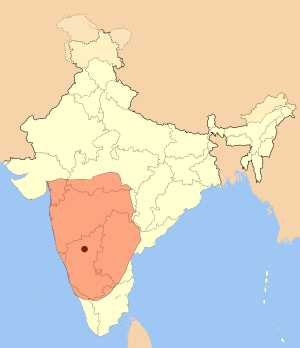


 Image via
Image via 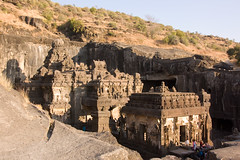
![Reblog this post [with Zemanta]](http://img.zemanta.com/reblog_e.png?x-id=2ea932d5-c211-475f-8eb1-8fd4e1ed5df8)